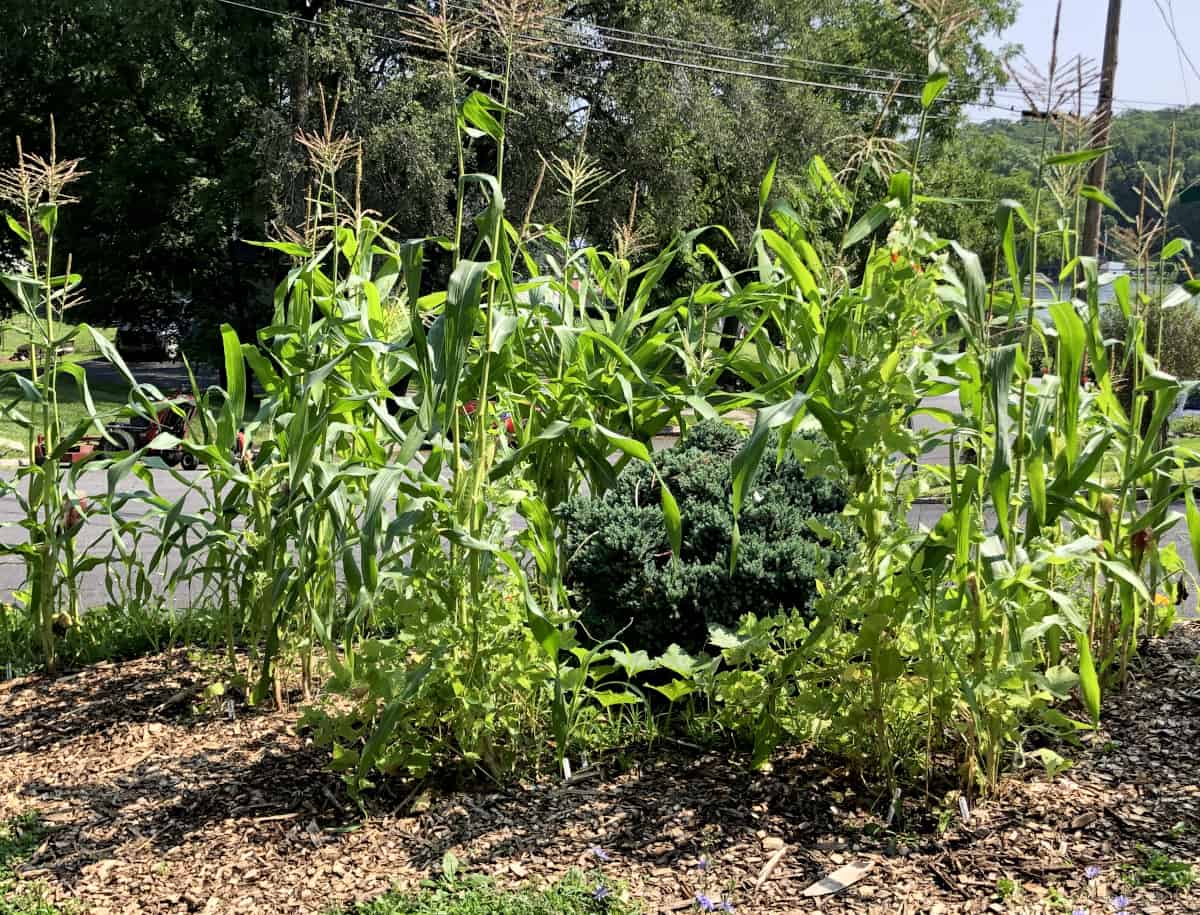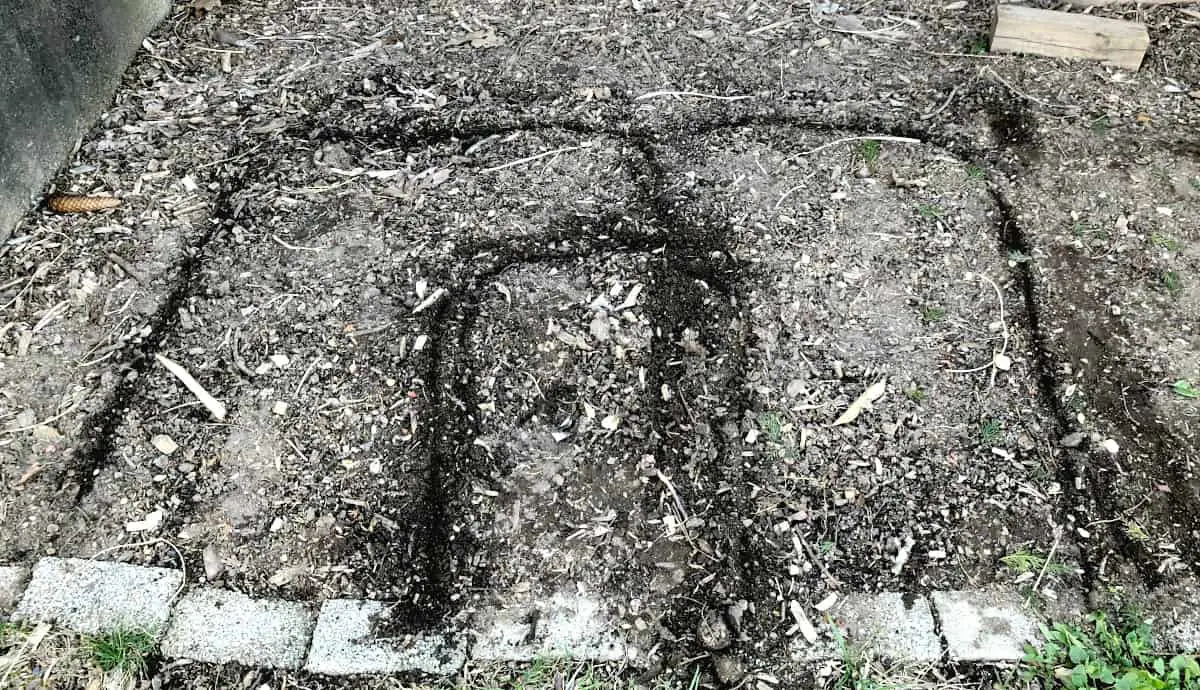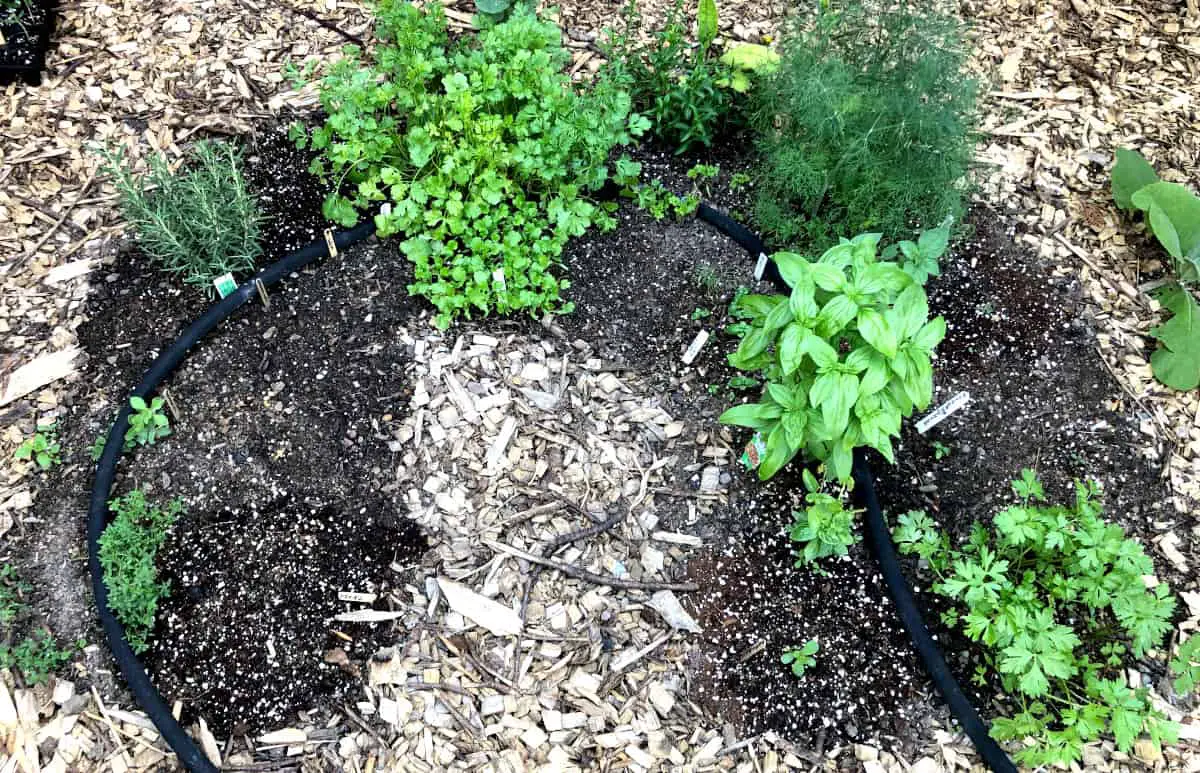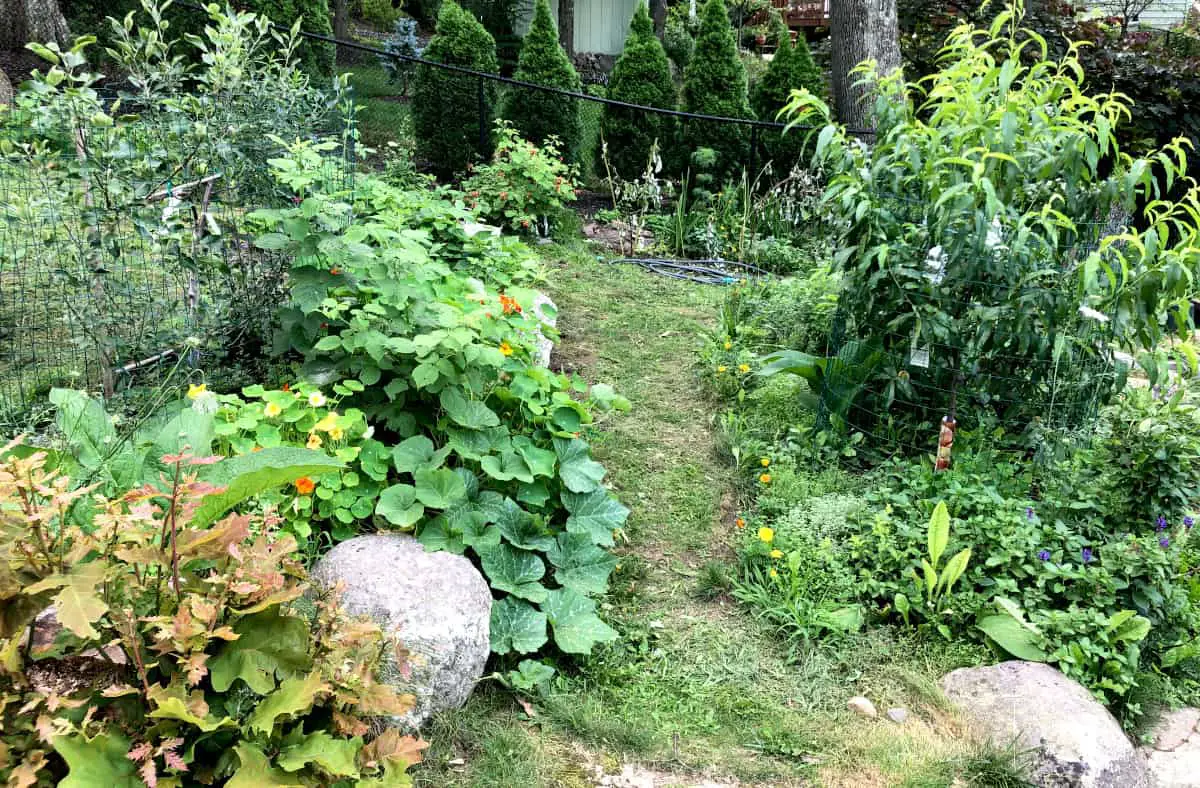An in-ground garden is a garden where plants are grown directly in the ground in the native amended soil. The are many benefits to an in-ground garden and it is not that complicated to set it up. Let me walk you step by step through how to start your first in-ground garden successfully.
Steps on how to build an in-ground garden for beginners:
- Select the proper location
- Prepare your garden supplies and tools
- Plan your garden and put it on the paper
- Measure your garden lot
- Prepare the area by removing the grass, tilling, removing obstacles
- Prepare the soil
- Install the fence
- Plant in blocks rather than in rows
- Sow your seeds and plant the seedlings
- Water your garden
- Care for your plants

How to select a location for an in-ground garden
When selecting a location for an in-ground garden, choose a location that receives the most sun with at least 8+ hours of sunlight, is least exposed to wind and nature elements, and is level. Location close to a water source is crucial as a garden needs to be watered several times a week. A well-located garden should be close to your home as this will encourage you to spend more time in the garden.
The best location is to lay the garden on the south side which usually receives the most sunshine and is the warmers in general. However, each property has its own obstacles and layout and what works best for others does not have to work best for your property. Therefore, watch your property three times a day, in the morning, noon, and afternoon and take note of where the sun is at those times. Choose the location where the sun shines the longest hours. Take into consideration the shadow-casting objects, if it is a windy location, how easy is to access the location, and how close it is to the water source and to the house. The closer to the house the more time you will spend in your garden maintaining it. The closer to the water source, the easier it will be for you to water it.
Choose a location where the ground is well drained and water does not gather and stays for days.
If you have no level lot, but it is a little bit inclined, then lay your inground garden beds perpendicularly to the slope. I am gardening on a slight slope and have several garden beds that work well when perpendicularly laid. If you lay your garden beds properly, a slight slope should not hurt your plants. I would advise laying about 3 inches of wood chips around your in-ground garden beds to protect them from washing the soil off and for gentler water drainage when heavy rain. I found a thick layer of wood chips around the garden beds and on the paths tremendously helping keep the beds in place all seasons.
While there are many benefits to an in-ground garden, it might not be for all properties. If the slope is steep, then consider going with a raised bed garden or a container garden instead.
Most of my garden is in garden beds and I have most of them on a slight slope. They are easier to maintain and keep level.
If you consider starting a container garden instead, I invite you to read my other article How to start a container garden for beginners.
What is the best type of garden for vegetables?
What supplies are needed to build an inground garden
To construct an in-ground garden prepare these supplies and tools:
- Gardening gloves
- Garden hose
- Watering can
- Garden hoe
- Garden rake
- Garden shovel
- Garden trowel
- Water source where you will hook up garden hose
- Fence if you plan to fence your garden in and the tools to set up the fence of your choice
- Pruner or garden shears
- Kneeling pad
- Soil scoop
- Plant labels
- Seeds, and seedlings to plant in the garden
- Soil amendments
Plan your garden and put it on the paper
- Start with a small space. For beginner gardeners, it is recommended to start their first garden with a small space.
- Draw the perimeter of your garden as if you would view it from a bird’s view. Usually, an i-ground home garden is a rectangle or a square shape.
- Draw a garden layout on paper to visualize how you want your rows or lots laid out. Plants can be planted in rows or lots. Usually, inground garden beds are about 3 feet wide, you can make them as long as you like. Draw paths at least 2 feet wide so it is easy for you to maneuver with a wheelbarrow or bulkier tools and walk, harvest, and water your garden when filled with mature plants.
- In addition to garden beds, draw other items and areas you would like to put in your garden such as a shed, composting station, compost bins, and sitting place if you would like to create a relaxing space.

If you draw your garden on paper first it will give you the best chance to move things around and readjust. It is easier to readjust them on paper compare to when they are already put in the garden. A garden laid out on paper will give you the best chance to visualize how the finished product will look like.
How to measure the size of a garden
A garden’s size is measured in square feet. Measure the length and width of the space you want to turn into a garden. Multiply the length by the width, it will give you the square footage of your garden. For example, 10 feet length x 10 feet width = 100 square feet. The size of the garden is 100 square feet. This will help you with the number of how many inground garden beds you could fit in your growing space and thus how many plants you can plant in it. Measuring the perimeter of the garden will also give you an idea of how much fencing you will need if you plan to install one.
How to prepare an area for an in-ground garden
Measure an area for an in-ground bed. Place a stick or a pole into each corner of the measured area and tie a string around them all to make the sides of the garden beds straight and visible for digging out the grass. Or use chalk or ash to draw the perimeter of the future garden bed directly on the grass to make the bed straight when digging out the grass. Uncover native soil by removing the grass, weeds, or anything that is covering the native soil. If removing the grass or weeds, remove them deeply enough to take out all the roots. Go ahead and use a garden shovel to scrape up the grass along with its roots. Grub hoe can also be used to dig out the grass. If you have quite a lot to dig out, a sod cutter can be rented out to help you do the job. It is best to remove the grass when the soil is moist, it will be easier to uproot it and dig it out.
Clear up the location, the weeds, and if needed the trees that would cast a shadow in your garden beds. Make the area obstacles-free.
How to prepare the soil in an in-ground garden
Once the native soil is uncovered and bare, amended it with compost, (fertilizer-optional if using compost), and peat moss or coco coir for drainage and moisture retention. Sprinkle the fertilizer on the top of the soil if using it. Then spread at least an inch of compost and an inch of peat moss or coco coir. The amount of peat moss or coco coir depends on how loose or compact the soil is. Loamy soil will need less than clay soil. Once everything is layered on the top of the soil, turn it over with a shovel about a shovel length deep. Break up large chunks with the back of the rake or with a shovel. Then add garden soil on top to fill the garden bed and level it so it does not sit low. Sprinkle another round of fertilizer or compost and use a rake to lightly mix it in the soil. You can leave the garden bed level to the rest of the ground or mount it over.
How to install a fence around a garden
The easiest way to install a garden fence around a garden is by using metal fence posts to erect the fence. Metal fence posts have hooks on the sides to tie the fence wire onto them. Erect the fence posts by burying them one foot in the ground. The easiest way to install them is by using a post driver. Use vinyl-coated garden fence wire and attach it to the posts using metal fasteners or plastic zip ties. When installing the wire to the posts, bend about a foot of the fence on the bottom and install it to the fence with a foot of the bent fence laying on the ground to act as a barrier to prevent pests like that could dig under the fence and enter your garden from under.
When you buy other garden fences that come in units, install them according to the instructions it comes with.
How to plant in an in-ground garden
Plant your seedlings or seeds in your in-ground garden according to your garden plan. Tag each plant or space you sowed with plant tags. Dig the hole in the soil about as deep as the pot the seedling is at. Place the seeding with its soil in and gently cover the hole with the soil. Gently tamp the soil around the plant. Water thoroughly at the base of the plant.

If you would like to learn about how to plant the seedlings properly, visit my other article at When and how to plant a seedling.
To learn how to water plants and gardens properly, visit How and when to water vegetable garden.
When you should not water your garden
Should you water the garden in the morning or at night?
Did you know you do not have to spend a penny on plant labels? You can make your own the same way I make mine. I shared how I make plant labels for my garden here.
How to make your own free DIY plant labels and why
How to care for an in-ground garden
- Water your garden regularly.
- Keep the plants fertilized
- Keep your garden weed free
- Inspect your garden regularly for diseases and pests
- Care for plants by staking them if needed, pruning them, shading in hot summer, or covering them with frost cover if danger of frost
- Mulch your garden to preserve moisture in the soil and to keep the weeds out
Remember it is better to start small if you are a beginner gardener. If starting small, one can keep up with the demands of the garden easier. A smaller garden has smaller demands, a large one has large demands. Start small and expand as needed.
How small a garden to start with? Visit How small garden to start with, for guidance.

In-ground garden pros
- An in-ground garden needs less watering, it is perfect for those living in dry and hot weather conditions. In-ground beds will not dry out as quickly as containers.
- It is easier to set up an irrigation system in an in-ground garden
- No need to purchase containers or garden bed materials
- Less to spend on soil and amendments as native garden soil will be used
- Very easy to expand if needed
In-ground garden cons
- It takes more labor to maintain weeds and protect from pests
- Soil stays colder in spring and can delay planting if the soil is not helped to warm up
- Lots of bending to the ground when planting, harvesting, and weeding which might be a challenge for elders or people with disabilities
- It might take time to build a soil quality depending on what quality is your native soil
- Potential draining issues if the garden is laid low or heavy rains
I like an in-ground garden very much, but I have to say it does not work best for my lot and location. Most of my lot is a slope and in my area, we have lots of wild pests all the way from tiny chipmunks to black bears, raccoons, and deer. I use motion activated sprinkler to keep the large animals away, but it does not keep the small ones like rabbits and chipmunks out. It is very difficult for me to protect my in-ground garden beds. Vegetables that get to be planted in my in-ground beds are the ones that are not very desirable by the wild pests like potatoes, bush beans, winter squash, butternut and spaghetti squash, tomatoes, and herbs. I found these are usually left by the wild animals in my area. If I plant peas, leafy greens, cabbage or any brassicas, and root vegetables in my in-ground beds they will be gone in no time. I usually plant these in my garden beds and even then, I cover them with garden mesh for protection.
An in-ground garden is a wonderful garden, but like with all the garden types, choose the one that works best for you.
As with any growing space, make the best of it! Read How to make the most of veggie garden space.
Why to label plants in garden and how to label them
Most high-yielding fruits and vegetables to grow in pantry stocking garden

